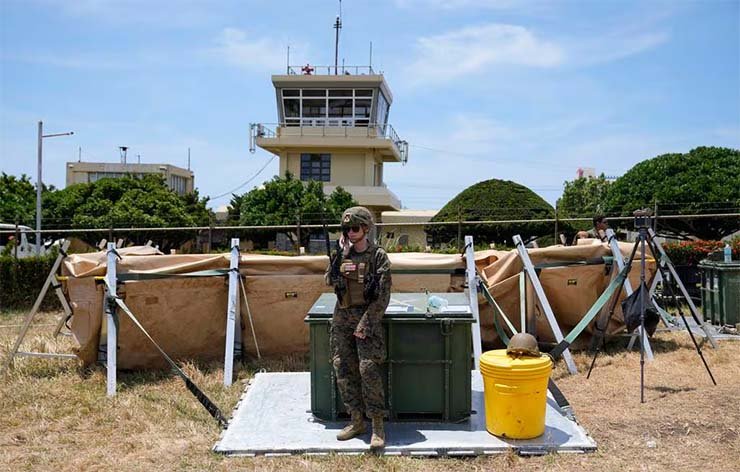
Basco, Philippines: A barely detectable speck appears near a beaming, late afternoon sun and then dodges behind a cloud. Soon that small speck, as it makes its slow descent, takes the form of a sleek, small unmanned aircraft.
The aircraft makes a quiet, delicate landing along the runway of a remote island airfield in the Philippines in the temporarily breezeless, scorching heat. The platform — a Kraus Hamdani Aerospace K1000 — had spent the majority of the day flying above the South China Sea and collecting data for the Extended Range Sensing and Effects Company, which is part of the US Army’s 1st Multi-Domain Task Force (MDTF).
Here in the Philippines, the 1st MDTF is using the Balikatan military exercise to experiment with its structure and identify the assets that will best serve joint and coalition forces in situations where adversaries can deny regional access. The bilateral drill between the American and Philippine armed forces took place April 11-May 9.
The ERSE Company set up camp in Basco, a volcanic island in the Batanes island chain north of the Philippines’ largest island of Luzon. On a clear day from certain high points on the island, one can see Taiwan. The company operated out of a small, air-conditioned tent directly next to the tiny commercial airport that hosts a few flights a day.
Maj Seth Holt, who commands the ERSE Company, inside his small operations centre on Basco, that he was focused on learning how his team can contribute to a flexible and easily tailorable multidomain task force.
His company is designed to provide sensing capability from the ground level within the electromagnetic spectrum up to roughly 100,000 feet, Holt said. The spectrum is a critical resource in modern conflicts, as those in control of it can manipulate communications, weapons guidance and more.
Holt said the company, during the exercise, has been able to pass data from the drone’s sensors and cameras to Philippine troops, a major step in advancing interoperability between the two nations.
While the K1000 is not a program of record, the Army has been using it in a variety of experiments, including the Edge exercise and Project Convergence. The aircraft does not have landing gear and relies on 3D-printed skids that can be swapped out after they wear down. The K1000 is also difficult to detect, with most sensors and radars mistaking it for a bird, according to Kraus engineers on site.
The aircraft fits inside a standard case, and it takes users roughly 10 minutes to unload, assemble and launch. The drone takes off from a moving vehicle as it catches the wind and becomes airborne. In Basco, it took off from the roof of a black SUV.















